Why do thrips appear on indoor plants and how to get rid of them?
Pests cause great harm not only to the plants of the garden and vegetable garden, but also to indoor crops. They bring in parasites with soil, seeds and seedlings. Harmful insects enter the premises through open vents. Man is also a carrier of parasite eggs.
Among the pests of indoor flowers, there are many that are difficult to notice, because they are microscopic. But both adults and larvae bring significant harm. Often you have to say goodbye to your favorite plant due to severe insect damage.
Content:
- What do thrips look like and why do they appear?
- What harm is done to indoor plants?
- Review of pest control drugs
- The best folk methods and means
- How to avoid the appearance of thrips on plants?
What do thrips look like and why do they appear?
Thrips are parasites that inhabit houseplants and feed on the sap of leaves and flowers. It is difficult to notice the insect: its body is elongated by only 1-2 millimeters. And the coloring is such that it merges with the color of the parts of the plant on which the adult settles. Thrips have body shades from brown, gray, and pinkish, yellow. Larvae are even more difficult to spot on the leaf surface.
In adult pests, you can see 2 pairs of transparent wings, pubescent along the edges with hairs. Thanks to them, the parasite flies from one plant to another, changing the territory to search for food. Insect paws are short with two segments and bubble-shaped claws. With such suckers, thrips are firmly fixed on the smooth surface of the leaves. Hence the name - bubble-footed. In the oral cavity of the pests, there are bristles with which they pierce the leaf plate and suck nutritious juices through the tube. On the head of an insect, antennae, divided into segments, can be found.
Male thrips differ from females in long body and smaller size.
The color of insects depends on the species. There are more than two thousand varieties of the pest. The most common are considered variegated, tobacco, decorative, rose. The habitat of thrips can be flowers, where they crawl between the petals in search of food. In addition, they take root well on the leaves. There thrips go through the entire life cycle from eggs, larvae to pronymph, nymph, imago, which lasts within 20-30 days. In one year, up to 12 generations of a harmful insect grows up.
Thrips appear on indoor plants in cases where flowers are poorly looked after. It is easy to get infected from a sick culture when it is around. Often a person carries the eggs of the parasite in his arms. Harmful insects feel best in humid air. The secretive lifestyle of thrips allows them to remain undetected for a long time. And only by the accumulation of eggs and larvae in one place, their presence on the flower is determined.
What harm is done to indoor plants?
All types of indoor flowers are affected by thrips. Particularly susceptible to pests begonias, fuchsia, roses.
You can determine the infection with the parasite by:
- clusters of black dots on the back of the sheet
- yellow spots on flowers, buds, leaves
- rolling leaves
- falling buds
- wilting and drying of inflorescences
When a large number of insects accumulate on a plant, traces of excrement are visible on the leaf plates. Areas of silvery appear on the flowers. In addition to the deformation of the buds, the curvature of the shoots occurs.
The danger of thrips is that they are carriers of viral infections. And then the plant can die due to blockage of food intake. In two to three weeks, thrips will spread to all indoor plants, gradually leading to their death.
Review of pest control drugs
Plants heavily affected by thrips are taken to a separate room and treated with insecticidal preparations. The best insecticides include:
- Confidor... The active ingredient imidacloprid acts on the nervous system of adults and larvae, paralyzing and causing death. 0.1 gram of the product diluted in a liter of water is enough to cope with thrips. The insecticide works for 15-30 days. The treatment is carried out three times with an interval of 1 week.
- Actellic. The universal drug is effective against thrips. Acting on the digestive tract of insects, the toxic agent leads to the death of the pest. The working solution is prepared by diluting the oily liquid in water. When spraying plants with insecticide, care must be taken.
- Vertimek is great for controlling thrips in indoor crops. After treatment with a working solution, signs of insect poisoning appear after 24 hours. Pests paralyzed by a poisonous substance die after 2 days. The insecticide protects indoor flowers from insect attacks for a long time.
- Inta-vir. The product is suitable for the destruction of pests on any plants. The insecticide is based on cypermethrin at a concentration of 3.7 percent. For processing, one tablet of the drug is dissolved in 500 milliliters of water and diseased plants are sprayed from a spray bottle.
- Fitoverm. Having a detrimental effect on thrips, the active substance of the agent does not accumulate in the tissues of indoor flowers. Poisons the preparation of insects after contact with the body of adult parasites, without affecting the eggs. Before processing, 1 ampoule of insecticide is diluted in 200 milliliters of water.
- Karbofos. A broad-spectrum preparation protects the plant against thrips for two weeks. But it is necessary to work with a toxic solution with gloves.
To achieve the maximum effect of chemical treatment, cover the pot with the plant after spraying with a plastic bag, leaving it for an hour. Then they try to keep the diseased flower separate from other green neighbors. Insecticides get rid of pests with a double treatment.
The best folk methods and means
At the beginning of infection with thrips, plants are treated with folk remedies:
- For this, decoctions and herbal infusions are prepared. Smell marigolds repels pests well. The flowers are crushed and 50 grams are poured over them with 1 liter of hot water. Boil for no more than two minutes, and then leave for three days. Strain it, use it for spraying. Similarly, tomato leaves or celandine are used.
- Treated with solution garlic the stems of a diseased flower quickly return to normal. You can simply spread the chopped garlic on a saucer and place it on the windowsill next to the plants. In order for the phytoncides of garlic to destroy the parasite, they put the chopped cloves in a pot and cover them with a cap for half an hour. Tobacco dust or makhorka is used to prepare working solutions. The infusion is prepared from half a glass of raw materials per liter of water. Insist during the day.
- Colonies of thrips eggs are washed off perfectly with soapy water. This method is useful for indoor plants with dense leaves: ficuses, palm trees. An alcoholic solution is also detrimental, with which the leaves are thoroughly washed on both sides.
- An adhesive tape trap is effective against thrips.
Traditional methods of dealing with bladder pests are proven and effective when used correctly.
How to avoid the appearance of thrips on plants?
Preventive measures need to be known in order to protect indoor flowers from a dangerous pest:
- First of all, a flower purchased in a store or taken from friends must go through quarantine. It is placed away from other plants and closely monitored for its condition. If after 2-3 weeks there are no signs of infection, then you can define a permanent place for the flower on the windowsill.
- Often a person himself contributes to the spread of thrips. When processing infected flowers, you must wash your hands with soap and water after the procedure. A hygienic shower is performed regularly for all flowers in the house. The leaves must be kept clean, then pests will not appear.
- Control of temperature and humidity plays an important role in prevention. It is best to prevent thrips from appearing by hanging adhesive tapes around the plants.
In order not to waste time and energy fighting a hidden enemy, you must be ready to repel his attacks.
More information can be found in the video:



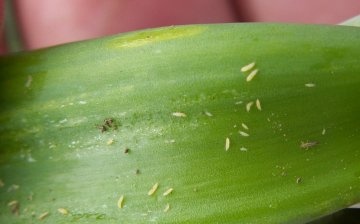
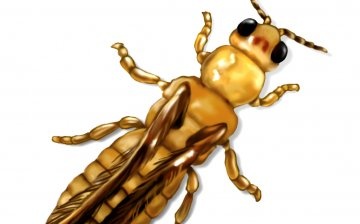
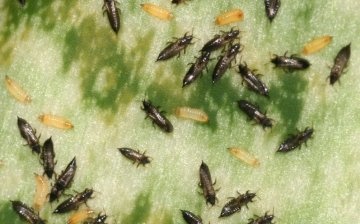
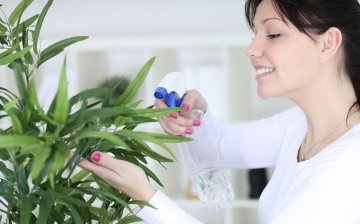
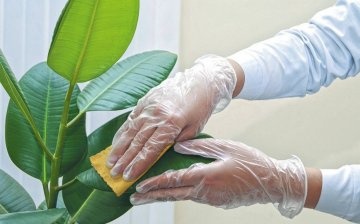
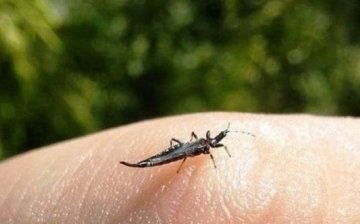






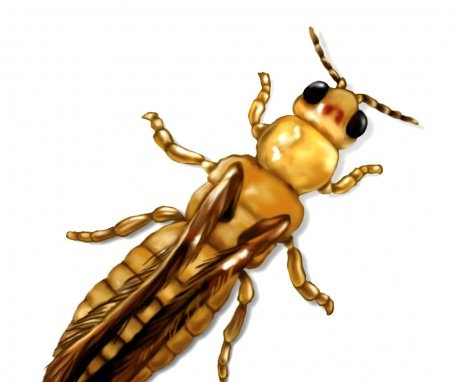
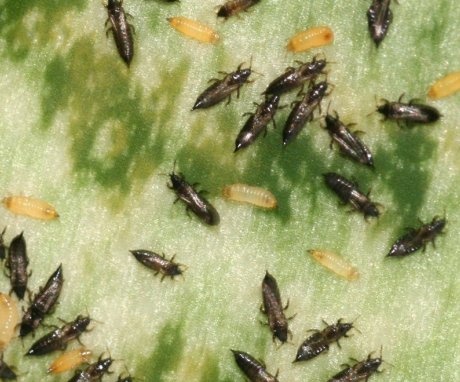
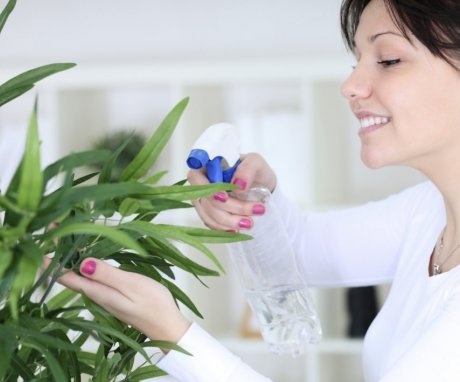
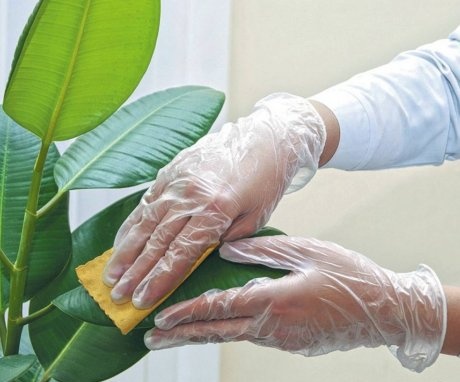

And I do not use the so-called "folk remedies" and "grandmother's recipes" for insects in home colors, but buy "chemistry", which is harmless to both people and pets. And you?
Rubbing the leaves with alcohol is effective, but for a while, it is impossible to completely rid the plant of this pest, the same applies to the soap solution, we diluted the soap solution from tar soap.
Yes, donated plants need to be treated very carefully. I almost infected all my flowers from one gift. Then I had to treat everyone. It is possible with folk remedies, it all depends on the area of the lesion.
I don’t quite agree with you, because I don’t recommend all these "folk remedies" and "grandmother's recipes", but I recommend using only chemistry, which is designed against these pests! And she is. It cannot but be!